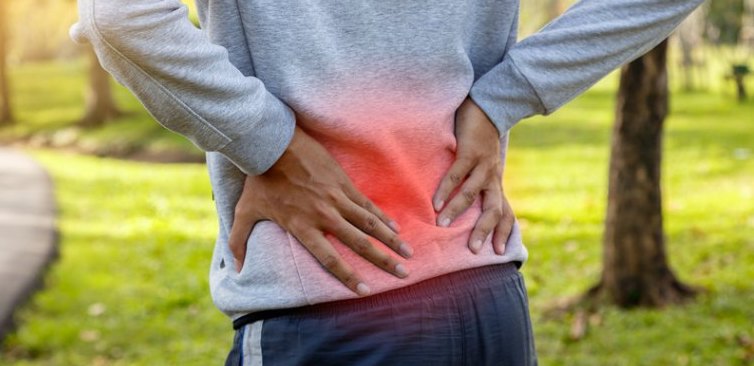Introduction
Lower back pain is a prevalent issue that affects many individuals due to various factors such as muscle weakness, poor posture, lack of proper movement, and mental stress. In this blog post, we will delve into effective strategies to manage lower back pain and promote a pain-free and active lifestyle. By understanding the importance of posture and implementing lifestyle changes, you can alleviate and prevent lower back pain.
Understanding Lower Back Pain
Lower back pain can be caused by several factors, including muscle weakness, tightness, poor posture, high heel shoes, lack of proper movement, improper breathing, and mental stress. In urban populations, the prevalence of lower back pain is higher due to differences in lifestyle and daily activities. By identifying the root causes and adopting appropriate measures, you can effectively manage and reduce lower back pain.
Improve Your Posture
Maintaining good posture is crucial for preventing and relieving lower back pain. By following these tips, you can improve your posture throughout the day:
1. Sit, stand, and walk straight: Make a conscious effort to align your spine properly, avoiding slouching or hunching.
2. Change positions regularly: If you have been sitting for more than 30 minutes, take a short break to stand up and walk, reducing stress buildup on your lower back.
Stretching for Flexibility and Tension Relief
Stretching is essential for promoting flexibility and relieving tension in the muscles that contribute to lower back pain. Focus on stretching your spine, hips, and ankles. Here is a highly effective stretch, known as the knee to chest stretch:
1. Lie on your back.
2. Bring one knee toward your chest and gently pull your leg until you feel a comfortable stretch.
3. Hold for 10 seconds, then release.
4. Repeat with the other leg, holding for 10 seconds.
5. Repeat the process 3 to 5 times for each leg.
6. Finally, hold both legs together in the stretched position for 10 seconds, repeating 3 to 5 times.
Engaging in Activities for Muscle Strength
Strengthening your muscles is crucial for maintaining proper posture and preventing lower back pain. Consider the following tips:
1. Stay active: Engage in activities that build muscle strength and endurance, such as resistance training, yoga, or pilates.
2. Maintain regular breathing: Focus on maintaining a relaxed and regular breath during any physical activity to improve oxygen flow and muscle engagement.
Walking with Proper Posture
Walking with proper posture is essential for maintaining a healthy spine. Follow these tips for walking correctly:
1. Keep your head up, chin parallel to the ground, and ears aligned above your shoulders.
2. Lengthen your back and avoid slouching.
3. Keep your shoulders down and back.
4. Engage your core muscles while walking.
5. Swing your arms naturally.
6. Step from heel to toe with a smooth stride.
The Importance of Breathing
Proper breathing patterns can help alleviate tension and promote relaxation, both physically and mentally. Try the following exercise:
1. Lie down on your back with a pillow under your knees.
2. Practice relaxed abdominal breathing, allowing your abdomen to rise and fall with each breath. This promotes movement of abdominal organs and induces a sense of relaxation.
Hot and Cold Therapy for Pain Relief
Applying hot or cold therapy can help relieve pain and reduce muscle tension. Use these techniques according to your condition:
1. Hot water bags or towels are effective for relaxing stiff and tight lower back muscles.
2. In acute conditions, use cold therapy to reduce inflammation and numb pain.
Tips for Morning Lower Back Stiffness
Starting your day with the right routine can minimize morning lower back stiffness. Consider the following steps before going to bed:
1. Lie face down on a mat or bed.
2. Apply a hot water bag or towel on the affected area for 15 to 20 minutes.
3. Gently massage a pain-relieving oil or coconut oil onto the area.
4. Lie on your back, bend both knees, and rotate them to the right and left side for 10 times on each side, holding for 5 seconds.
5. This routine helps relax your back muscles and reduces stiffness in the morning.
Conclusion
Lower back pain can be effectively managed through lifestyle changes and targeted practices. By improving your posture, incorporating stretching exercises, engaging in physical activities, walking with proper form, focusing on breathing, and utilizing hot and cold therapy, you can alleviate lower back pain and promote a pain-free, active life. Remember to consult with a healthcare professional or a physical therapist for personalized guidance and support. Take control of your posture and movement to ensure a healthier, more comfortable life. A pain-free spine and improved posture are attainable with a conscious effort and consistent practice. Start implementing these tips today and pave the way for a lifetime of pain-free activity and overall well-being.


